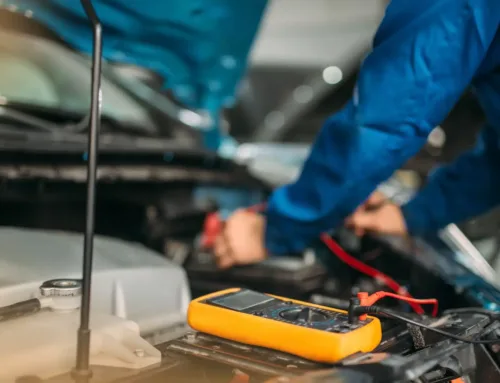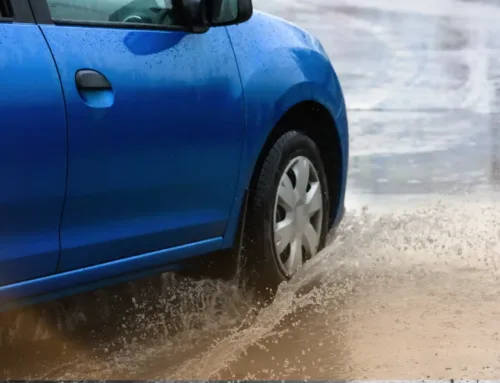Learning to drive is one of the most exciting times in a person’s life, it can also be one of the most overwhelming, especially if they’re not too familiar with the layout of a vehicle. In most brands and models of car, the dashboard is pretty similar with a few various design and style choices depending on the make of the vehicle.
Familiarizing yourself with the dashboard and all of the various indicators and lights before driving is a great way to make it feel a little less overwhelming and more manageable. Here are some of the standard displays and indicator lights and what they mean to you and your vehicle.
This is a chart that shows 64 of the most common lights that may appear on your dashboard. The dial on the left shows the RPM gauge, which is the Revolutions Per Minute, which is how many times a minute that the crankshaft is spinning. It is measured in 1000s and as you can see, once you get to a higher RPM, in most vehicles around 6,000, you run the risk of overworking or damaging the crankshaft.
The other dial on the right is the standard speedometer, which monitors the speed in Miles Per Hour of your vehicle. Here are just a few of the most important lights to consider on your dashboard.
Important lights on car dashboard
1 – Fog Light – (front) In your vehicle there are likely two types of lights- driving lights and fog lights. Fog lights are, as it sounds, specifically made to handle driving through thick, dense fog. This light indicates that the front fog lights are going out.
2 – Power Steering – This means the power steering is experiencing trouble, whether it’s low fluid or another issue. If this light is on, seek an experienced auto mechanic immediately.
3 – Washer Fluid Low – This means that your windshield washer fluid is running low, while this may not seem important, clean and clear windshields greatly reduce the chance of accidents.
4 – Brake Pad Warning – Usually you’ll begin to hear your vehicle making odd sounds to accompany this light, which indicates that your brake pads are wearing out.
5 – Cruise Control – Most vehicles have a cruise control feature which will maintain your speed without needing to push the pedal, this light indicates that cruise control is on.
6 – Turn Signals – Whether you’re turning left or right, these arrows indicate to you that the signal is on and visible to drivers.
13 – Ignition Switch Warning – This indicates that your generator is not charging your vehicle’s battery
21 – Tire Pressure Low – This alerts you that your tire pressure is running low and you may have trouble gripping the roads.
29 – Catalytic Converter Warning – Your catalytic converter is a crucial part of your vehicle’s exhaust system and this light indicates that something is wrong and needs to be addressed immediately.
30 – Seat Belt Warning – This will also usually be accompanied with a chime to remind you: always wear your seat belt.
31 – Parking Brake – This shows you that your parking brake is still set, which will grind and overwork your vehicle if you try to drive with it engaged.
39 – Airbag Warning – Any issue with your airbag will be indicated by this light, there is also a light (42) that indicates the airbag is deactivated.
49 – ABS – Another light that signals a trip to the mechanic is needed immediately, this is referring to your Anti-Lock Brakes.
51 – Door Open – Even if it seems closed, your door needs to be properly closed for this light to turn off.
52 – Hood – This light will show that your hood has been popped and is opened.
53 – Gas light – This won’t come on until you’re running low on and need gas. Every vehicle has a different threshold so be sure to learn the limits of your car.
57 – Oil Pressure Low – If your oil pressure dips, it can be extremely damaging to your engine so check your oil and see an auto mechanic for any repairs needed.
58 – Defroster – Used in cold weather, this will help clear the windows of cold air and frost to make visibility easier for you.
62 – Check Engine – The light nobody wants to see, check engine can mean just about anything so seek an immediate diagnosis to solve the problem, whatever it is, as fast as possible.
Conclusion
These are just some of the lights found on most vehicle dashboards; with so many alerts and notifications now it can be overwhelming to new drivers. Familiarizing yourself with these though is a great place to start to help you understand your vehicle’s functions and also what to look for in case you may need service or have an issue.




